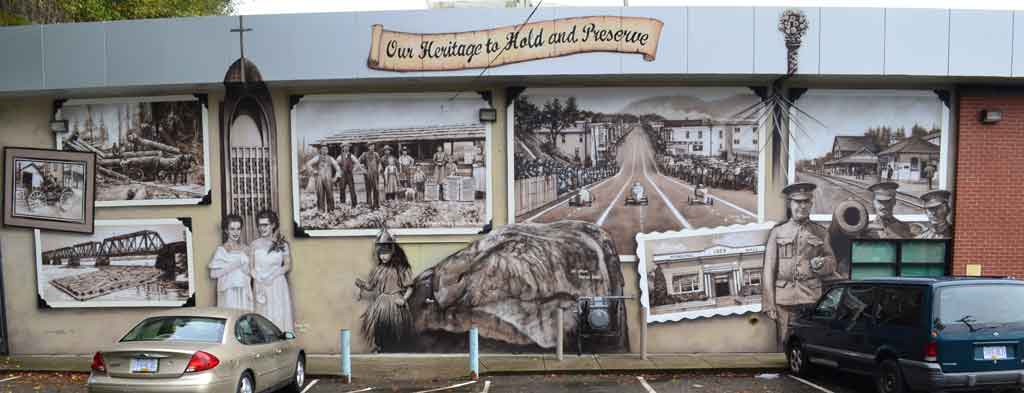By Katie Stobbart (The Cascade) – Email
Print Edition: October 29, 2014

Earlier this year, a fantasy mural was whitewashed without fanfare on South Fraser Way. The painting on the back of the Ford dealership was there as long as I can remember, and I was surprised to see how quietly a feature of the Abbotsford cityscape slid into memory.
The mural’s erasure upon the exchange of the building’s ownership raises questions about the permanence and ownership of public art. How much of a right does the public have to art and to the public spaces it occupies? Is public art important or meaningful to the community beyond the original intent of the commissioner and the artist?
There are over 40 installations of public art around Abbotsford, including murals, sculptures, and benches. According to the City of Abbotsford website, public art is a practical addition to the community as well as being eye-catching.
“Public art creates safety, by putting eyes, and people onto the streets where it is located. It also attracts tourists, skilled workers, and businesses that desire to visit and work in an environment that places a high value on aesthetics and place making,” reads the website.
Public art also contributes to a community’s sense of identity. It gives flavour to a neighbourhood, serves as a landmark, encourages creativity, and sometimes even reminds us of events that shouldn’t be forgotten as time passes. Shared art suggests a sort of symbolic unity; an image can represent collective history and values. The nondescript building is transformed into a canvas for expression — a canvas which is intended to have some permanence.
While students are part of the local communities surrounding UFV campuses and can enjoy the art featured throughout the Fraser Valley, there’s little to iterate the artistic character of UFV on its homeground. It’s not that there’s no art on campus — in Abbotsford at least, framed works hang in the halls, occasional installations emerge on the Green and in other open spaces, and as of last year there is a mural on the wall in the space AfterMath currently occupies (though I’m not sure what its fate will be when the campus lounge moves to the new Student Union Building this spring). Another impermanent addition to campus public art is the recent art conversation wall in C Building. But I don’t know of a single mural, sculpture, or statue that’s here to stay.
The Abbotsford campus is mainly characterized by unappealing maroon stucco. Students don’t come here for the colour of the walls, but the physical landscape doesn’t say anything about the character of the place, nor the creativity of the people who occupy it.
The minimal public art is not due to a lack of ability. Even as an older mural was painted over in one part of the city, a new one has been added outside ARC. This art project came about as part of a UFV course in community art practice (VA 390) in which students propose public art projects to the City, then make art happen.
Yet we don’t commission permanent art for UFV’s walls, outside or in. When we were coming up with ideas for this week’s cover, we bandied about images of paint spilling into city streets, splashes of colour on brick, or simply a picture of public art. In the end, we opted to open up the conversation with a little dream: one of the walls facing the Green sporting a new look.
The former mural on South Fraser Way is now a blank white wall. But UFV’s walls don’t have to be.


